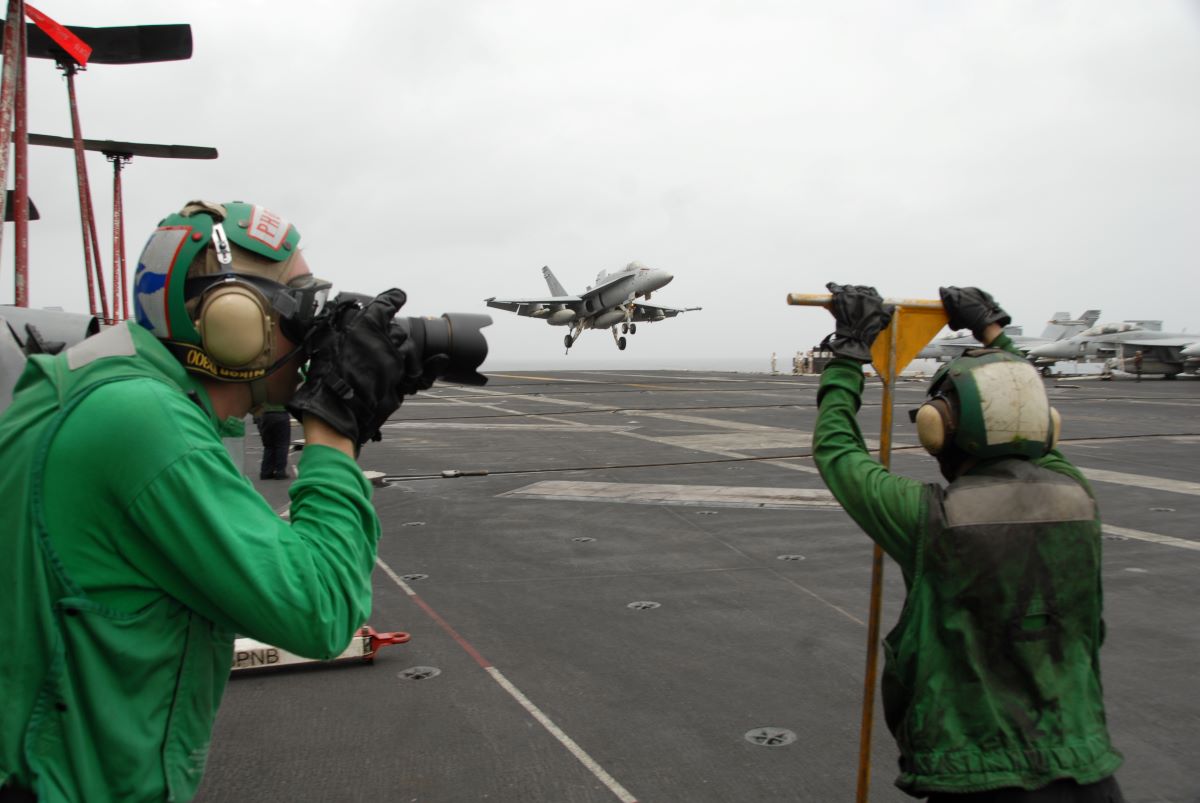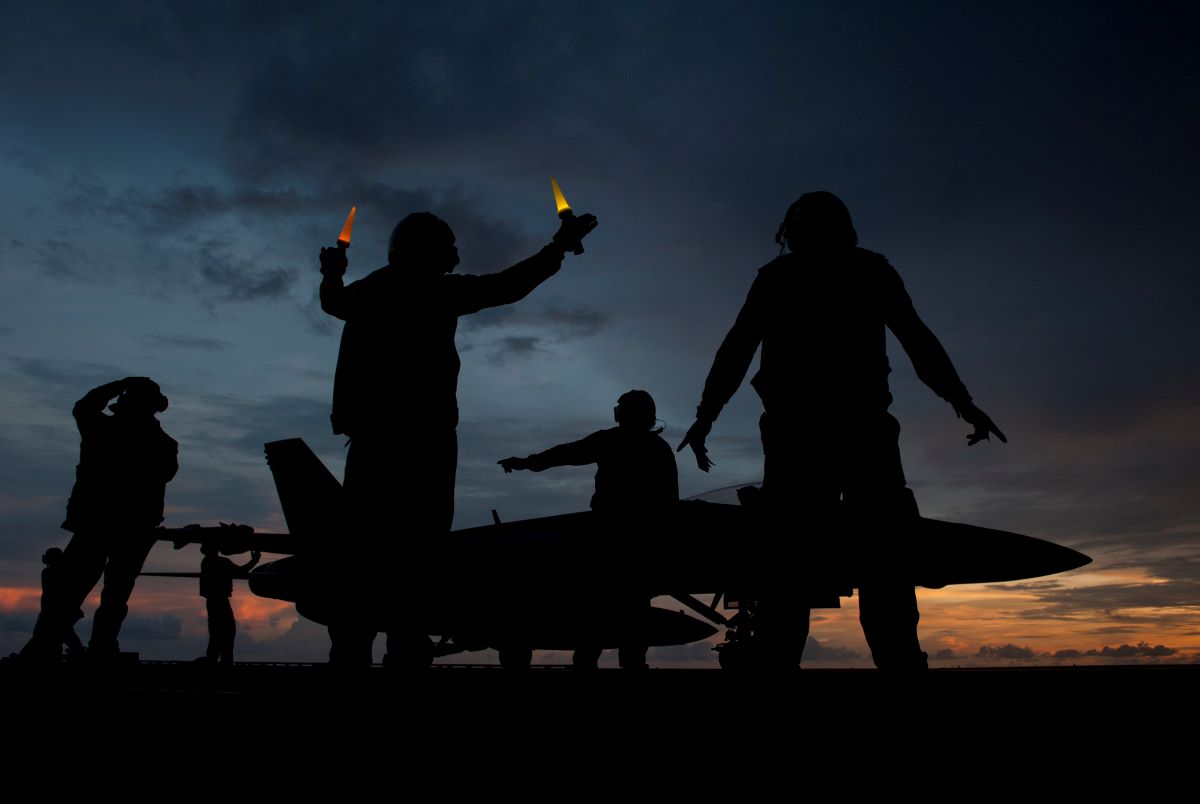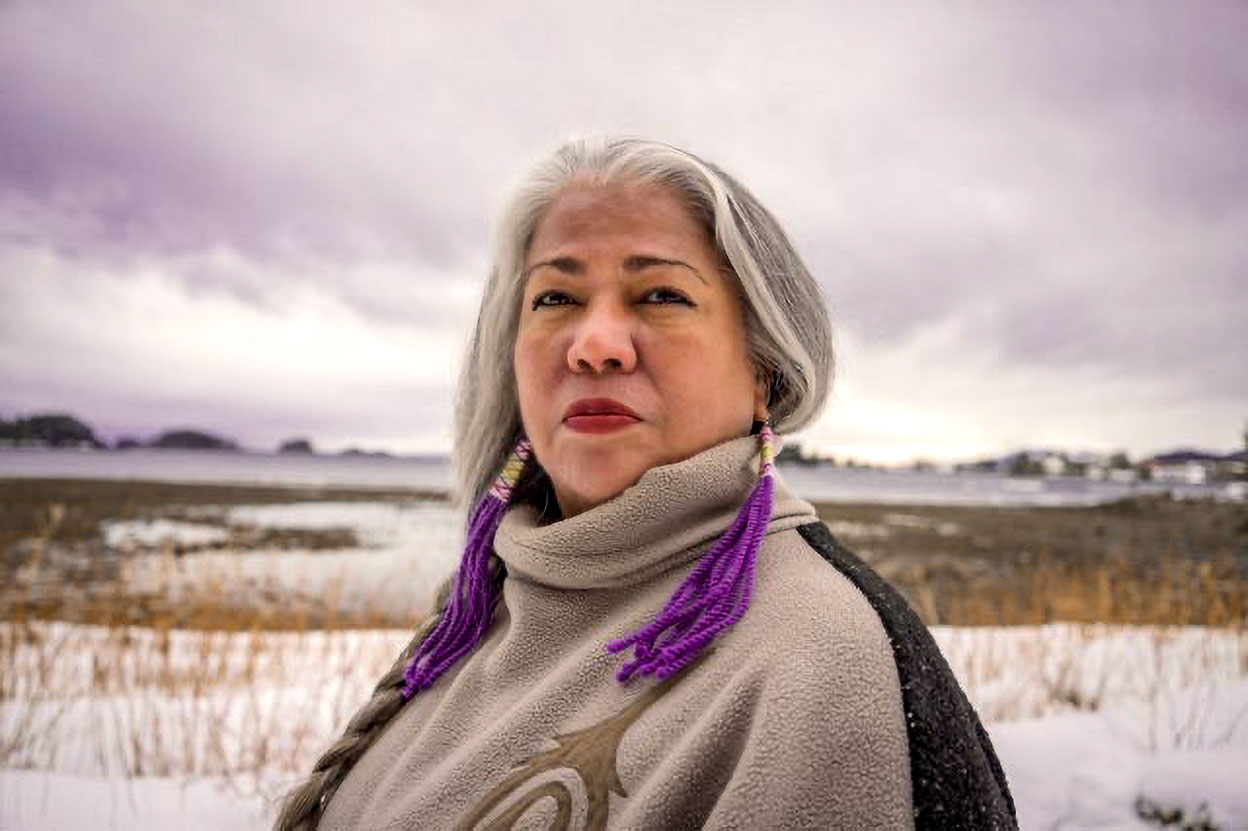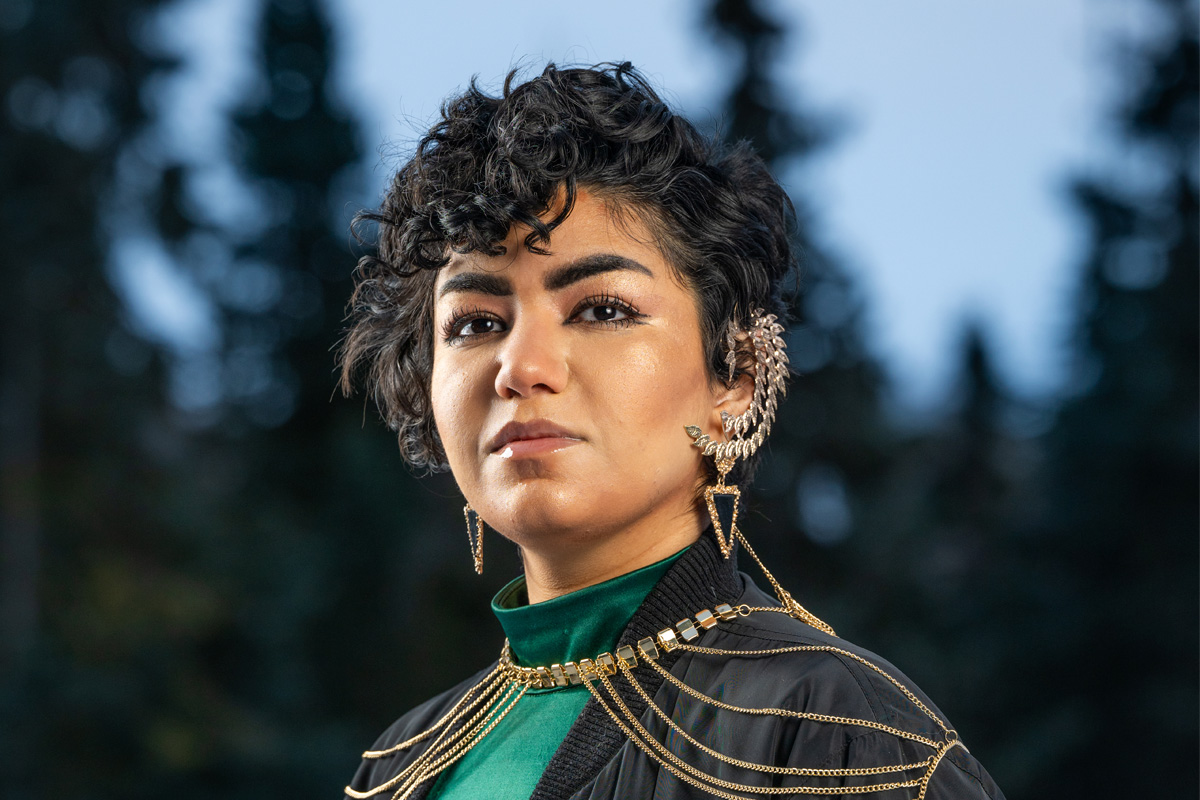Behind the lens: UAA’s chief of photography and videography talks about his pathway from the U.S. Navy to the university
by Catalina Myers |

UAA’s chief of photography and videography is hard to miss. At six-foot-plus, his daily uniform of khaki cargo pants, a black button-up and his signature bucket hat, James Evans has been capturing the university’s students, faculty and staff for six years.
An alum of UAA’s Department of Journalism and Public Communications (JPC), Evans began his journey into professional photography in 2005 when he arrived at Fort Meade, Maryland, for basic still photography training with the U.S. Navy. After graduating from Chugiak High School in 2003, Evans knew he wanted to pursue a photography career, and despite the warnings of “this is a challenging industry to break into” and “you’ll never make a career taking pictures,” he began exploring his options.
Evans comes from a military family; his father was in the Air Force, and his grandfather served in the Navy. He had hoped to join the Air Force but ended up signing up with the Navy as a photographer’s mate, although he had to wait two years until a position opened up.
A bit of a history buff, Evans said he was excited to be holding a title steeped in tradition and following in the footsteps of the men who began capturing some of the world’s most significant conflicts of the 20th century.
“This is a job that dates back to the pre-World War II days,” Evans said. “Those original aerial photographers did intelligence gathering, as well as documenting life on ships. A lot of famous World War II photography was shot by Navy photographers.”
Evans said there are many similarities between his job at UAA and the one he had aboard the USS Abraham Lincoln aircraft carrier, his first ship assignment in the Navy.
“It’s part historical, it’s part marketing but without having to sometimes capture the ‘bad guys’ plane on the horizon or stay up really late sending photos to the Pentagon every night,” he said. “But the staying late, getting photos captioned and sending them to the right people — that’s still what I do at UAA.”
He spent two years, including two half-year deployments on the USS Abraham Lincoln, carrying out assignments and capturing day-to-day life in the Navy. In addition to photography, there were typical military duties, like cleaning, performing shipboard maintenance and getting yelled at for not having one's shoes perfectly shined. As Evans moved up the ranks, the roles reversed, and he was the one handing out assignments and reprimanding subordinates for things like “unshined shoes.”
“After that I went to two more schools, intermediate photojournalism, which is based back in Maryland, and then I kind of lucked out,” Evans said. “I had my portfolio accepted into the Military Visual Journalism program in Syracuse University’s Newhouse School. It’s kind of like “Top Gun” for military photographers. The program only takes four people from each branch of the military per year and sends them to a fancy East Coast school for a year to learn photojournalism.”
Evans said he’d planned on civilian life after working on the aircraft carrier and attending school in Maryland. But the opportunity to attend Syracuse University’s prestigious military program was just too good to pass up. However, the price was steep. In exchange for one year of education, he owed the Navy three more years.
“I wasn’t going to pass on that opportunity,” he said. “I joined the military to go to college and this opportunity to attend a really nice university that I’d never be able to attend otherwise, landed in my lap.”
After graduating from the program, Evans was back on the open ocean aboard another aircraft carrier, but with more education and experience. He was assigned to a public affairs center in San Diego, but also served as part of a detachment aboard the aircraft carrier USS Carl Vinson. When stateside, he helped train public affairs teams from around the fleet to take better photos, and when deployed aboard the Carl Vinson, he augmented, helped train and lead the ship’s media department. He was also able to score his most memorable shipboard assignment, covering his hometown’s namesake ship, the USS Anchorage’s commissioning voyage from San Diego to Alaska.

With the global war on terror lingering and a large U.S. military presence in the Middle East, Evans said the military recognized the impact of media, particularly with emerging social media platforms like Facebook and Twitter. The advent of social media shifted people’s ability to broadcast events in real-time through news bites, photos and videos. With new communication tactics on the horizon, a major shift occurred in jobs that traditionally were more specialized to broader ones better equipped to handle the rapidly shifting media landscape.
“I was able to pigeonhole myself as a photographer and photojournalist,” Evans said. “There were guys that were better at video, writing or graphic design and they focused on that. I got to experience the digital and media revolutions through the lens of the military.”
During Evans’ second enlistment, his wife had enough of military life and told him she was moving home to Alaska. He agreed it was time to move on.
“Before I left San Diego, I contacted Paola Banchero, telling her I was moving back and that I wanted to finish my journalism degree at UAA,” said Evans. “She helped me transfer my credits and got me in touch with UAA Military Veterans and Student Services (MVSS). MVSS helped me secure my GI Bill and I had three years where I got to go to school in the winter and fish in the summer.”
After his service in the military, Evans said attending UAA was a welcome change of pace. He freelanced to make extra money and, after three years, graduated from UAA's JPC program, earning his degree in journalism with a minor in political science. He liked the hands-on work and small classes compared to his crowded lectures at Syracuse. Evans never imagined that he’d wind up as a professional photographer for his alma mater. After eight years as a Navy photographer, Evans thought he’d return to Alaska and get a “normal” job and photography would be a side hustle, reserved for weekend trips to the Kenai capturing wildlife or the occasional corporate photoshoot.
Evans still heads down to the Kenai every summer and requests time off each fall for caribou hunts along the Denali Highway. But for Evans, his nine-to-five happens to be his dream job. He’s happiest slinging a camera or two around his neck each day, bucket hat on his head and roaming campus, capturing the day-to-day life of UAA’s students, faculty and staff.
 "Behind the lens: UAA’s chief of photography and videography talks about his pathway
from the U.S. Navy to the university" is licensed under a Creative Commons Attribution-NonCommercial 4.0 International License.
"Behind the lens: UAA’s chief of photography and videography talks about his pathway
from the U.S. Navy to the university" is licensed under a Creative Commons Attribution-NonCommercial 4.0 International License.














